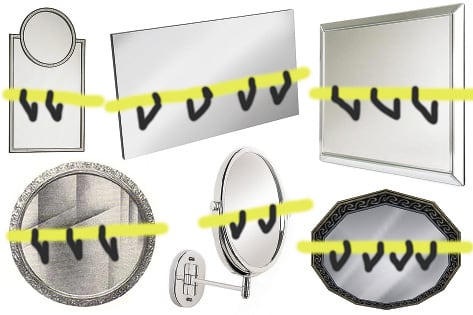
Uncommon Room
Jessie Bullivant, Heidi Holmes, Isabelle Sully and Isadora Vaughan
Curated by Isabelle Sully
Rear View, Melbourne
5–25 May 2012*
These artists have made the job of a reviewer pretty easy. I can think of no better metaphor for their outsized ambitions and inflated egos than the two giant beach balls that dominate the front space at Rear View. I mean no disrespect by this, since these are both qualities necessary for a successful artistic career.
If I were a life coach for artists, I would add a third trait to this list: a masochistic urge to work. Despite their scale, the artworks in this exhibition reflect ambivalently on that imperative, often flirting with the idea of play as a more profound — or at least more enjoyable — action.
It’s a fitting tease, then, that the aforementioned beach balls are too large to throw around at your next pool party. Having been inflated until they are squeezed between the gallery’s floor and ceiling, they — somewhat heavy-handedly — invert the prevailing demand of what certain people in Melbourne call spatial practice. By pushing back and denying their potential size, it is the space that responds to the work.
The result of collaboration between Heidi Holmes and Isadora Vaughan, the hand-sewn PVC spheres obviously extend Vaughan’s interest in the expressive limits of particular materials.1 The jauntiness of the spheres is undermined, however, by their unsettling colour scheme. Rather than offering a taste of the Skittles rainbow, the balls are painted only in the generically corporate red and blue of the Officeworks logo.
A clue comes from the work’s title: How much Isadora thinks Heidi contributed to this artwork / How much Heidi thinks Heidi contributed to this artwork 2012. The room sheet helpfully notes that red represents Heidi’s contribution. One of the balls is split fifty-fifty, and the other features a small crescent of red on a waxing blue moon.
If, as I am told, these proportions are based on transcriptions of recordings made secretly by Holmes, any interpretation of their results is potentially disturbing.2 This is undoubtedly the intention of Holmes, whose obsession with performance — not the art kind, think of the ‘P’ in ‘KPI’ — takes the banality of self-as-subject to a whole new level.
By using their own — presumably dysfunctional — collaboration as material, Holmes and Vaughan transform the absurdly playful into the bureaucratically sinister. Still, installed at Rear View HMITHCTTA/HMHTHCTTA is mischievously assertive. In a delightful paradox, the work seems to have arisen out of a clear and unified vision.
After wending your way through the massive balls you might be surprised to find yourself face to face with Time Magazine’s Person of the Year 2006. Yes, that’s right. You. The mirror covering the gallery’s rear wall has a transformative effect, not just on the visible number of beach balls, but on the purpose of the space itself: expertly mounted in front of the glass is a full-length ballet barre.
This collaborative work by Jessie Bullivant and Isabelle Sully appears slick and serious, but on closer inspection betrays the artists’ more playful impulses. Bullivant, in particular, is often concerned with revealing — or contriving, if necessary — the inadvertently poetic tassels of economic transactions. Here, cute visual clues testify to the artists’ outsourcing of labour.3
Cuter still is the fact that the ballet barres are made not of industry-standard Victorian Ash, but of broom handles.4 It might be drawing a long bow to suggest that this calls to mind Joseph Kosuth’s One and Three Brooms 1965, except that there are exactly three brooms here. I think I can safely attribute this almost-too-clever wink-and-nod to Sully, who is insistent in her determination to hold a conversation in art.
The installation is (of course) called Barre Work, after the exercise routine dancers perform throughout their careers. This makes explicit what should be obvious at the sight of the broom handles: this artwork is about art and work. While the allusion to ballet implies a lifelong Brâncuși-esque honing of skills, the title’s double entendre suggests the reality of life for many young artists: pulling beers.
Sully herself does just that at the aptly named Workers Club, about one kilometre from Rear View.5 But if the artists are serving drinks at the Workers Club, who’s serving drinks at the Artists’ Club? The answer is (of course) more artists, as we work to make these uncommon rooms we inhabit for three weeks at a time as common as possible.
Although Mars, Inc. suggests we should rest as well, I don’t believe there’s much more to life than work and play. From a variety of nuanced perspectives, the works in Uncommon Room interrogate that recognisable but ineffable nexus between the two. In the same explorative spirit, we should earnestly open the doors. The gallery is the Artists’ Club, and everyone’s invited.
Daniel Stephen Miller works and plays in Melbourne.
